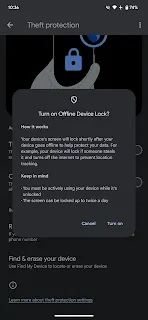 |
| Image: Samsung |
The Samsung Galaxy S25 Ultra is the latest flagship smartphone from the South Korean tech giant, and it has left a lasting impression on this reviewer. Despite its uninspired design, the device has a lot to offer, including a stunning display, improved camera, and a user-friendly interface. But is it worth the hefty price tag of $1,300?
Design and Hardware
The Galaxy S25 Ultra's design is reminiscent of its predecessors, with a few minor tweaks. The device features a 6.8-inch Dynamic AMOLED display, which is both vibrant and sharp. The phone's build quality is solid, with a durable glass back and a metal frame. However, the design is not particularly innovative, and the lack of color options is a letdown. The phone is available in black, gray, and a grayish-blue hue, which may not appeal to users who prefer more vibrant colors.
One of the notable changes in the design is the curved corners, which provide a more comfortable grip. The phone also features a lighter weight, making it easier to handle. The display is protected by Gorilla Armor 2, a new glass cover that offers improved scratch resistance and anti-reflective properties.
Software
The Galaxy S25 Ultra runs on One UI 7, Samsung's latest software iteration. The interface is smooth, fast, and intuitive, with several notable features, including a vertically scrolling app drawer, a new multitasking page, and a split notification and quick settings panel. The software also includes Live Notifications, a feature that provides timely information and updates.
One of the standout features of the Galaxy S25 Ultra is its AI-powered capabilities. The device includes Galaxy AI, a suite of tools that aim to bridge the gap between what AI is capable of and what users can actually use it for. The phone also features Gemini, a powerful AI assistant that can perform tasks such as converting images to usable data and summarizing videos.
Camera
The Galaxy S25 Ultra's camera has seen significant improvements, with a 50MP primary sensor, a 12MP front camera, and a 50MP ultrawide sensor. The camera app is intuitive, and the image quality is excellent, with good detail and color accuracy. However, the camera struggles in low-light conditions, producing fuzzy and poorly processed images.
Battery Life
The Galaxy S25 Ultra has a 5,000mAh battery, which provides decent battery life. The device can easily last a day with moderate use, but heavy users may need to recharge it mid-day. The phone supports 45W fast charging, which is relatively slow compared to other flagship devices.
S PenThe Galaxy S25 Ultra includes the S Pen, a stylus that offers a unique experience. The S Pen is precise and responsive, making it ideal for note-taking and creative tasks. However, Samsung has removed the remote, Bluetooth-powered features from the S Pen, which may disappoint some users.
Conclusion
The Galaxy S25 Ultra is a solid flagship smartphone that exceeds expectations. While it may not be the most innovative device, it offers a great display, improved camera, and a user-friendly interface. The phone's AI-powered capabilities and S Pen features make it a compelling choice for users who value productivity and creativity.
However, the device's price tag of $1,300 may be a deterrent for some users. The phone's design is not particularly innovative, and the lack of color options may not appeal to users who prefer more vibrant colors. Additionally, the camera struggles in low-light conditions, and the battery life could be better.
Ultimately, the Galaxy S25 Ultra is a great choice for users who value a solid, reliable smartphone with a great display and improved camera. While it may not be the most exciting device, it is a great option for users who want a phone that can keep up with their daily needs.
Rating: 4.5/5
Recommendation:
The Galaxy S25 Ultra is a great choice for users who value a solid, reliable smartphone with a great display and improved camera.

















